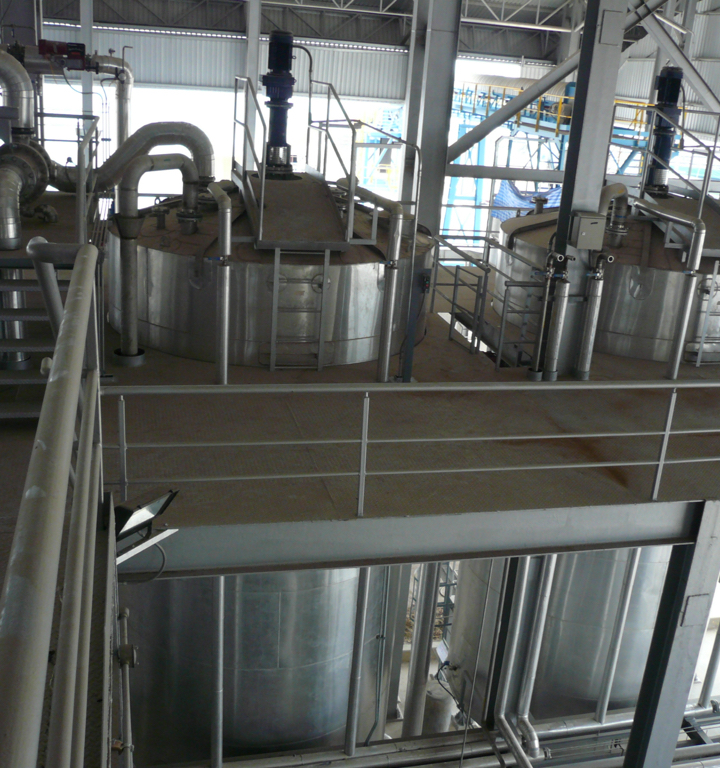
Molasses pretreatment
Solutions
& Technologies
Molasses pre-treatment is an essential practice used to improve the quality of the fermentation process while reducing bacterial pollution and impurities. This method combines heat treatment and purification by decantation to obtain optimum results.
The pre-treatment of molasses plays an essential role in reducing the bacterial pollution and impurities present in this by-product of sugar production. This effective method is based on a combination of two key stages: heat treatment and purification by decantation.
In C molasses purification, the process involves hot, low pH decanting of the diluted molasses just before it is subjected to fermentation. The purpose of this step is to remove unwanted precipitated solids from the molasses, which greatly helps to reduce sugar losses in later stages of the production process.
Thanks to two key features – low steam consumption at low pressure and the use of dual static decanters at optimum conditions of 85°C and a pH of 2-3 – our pre-treatment process guarantees superior results at every stage of production.
Our innovative approach focuses on the judicious use of low-pressure steam to minimise energy consumption while optimising treatment performance.
We use dual static decanters operating at precise temperatures of 85°C, accompanied by an optimum pH of 2-3, to ensure purification of the highest quality.
Pre-treatment of molasses has a number of advantages:
Le prétraitement des mélasses, en combinant un traitement thermique et une épuration par décantation, offre une solution efficace pour améliorer la qualité du produit final en réduisant la pollution bactérienne et en éliminant les impuretés. Cette méthode, représentant une de nos nombreuses solutions, permet de garantir une fermentation plus saine et plus efficiente tout en optimisant la récupération du sucre, assurant ainsi une production plus durable et rentable dans l’industrie sucrière.
The pre-treatment of molasses, by combining heat treatment and decantation purification, offers an effective solution for improving the quality of the final product by reducing bacterial pollution and eliminating impurities. This method, one of our many solutions, ensures healthier and more efficient fermentation while optimising sugar recovery, thereby ensuring more sustainable and profitable production in the sugar industry.
The molasses pre-treatment process allows the reduction of bacterial pollution and impurities. It combines a thermal treatment and a purification by decantation.
C-Molasses epuration consist in a hot decanting with low pH of the diluated molasses before their fermentation. The preciptated solids are then washed to reduce sugar losses.
